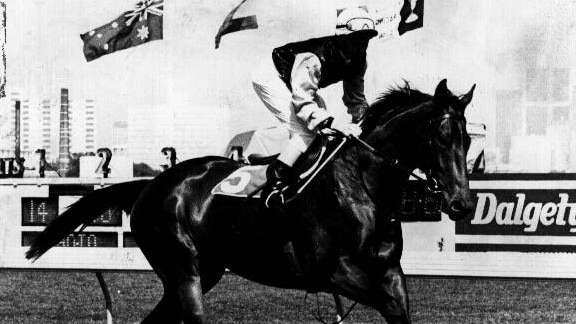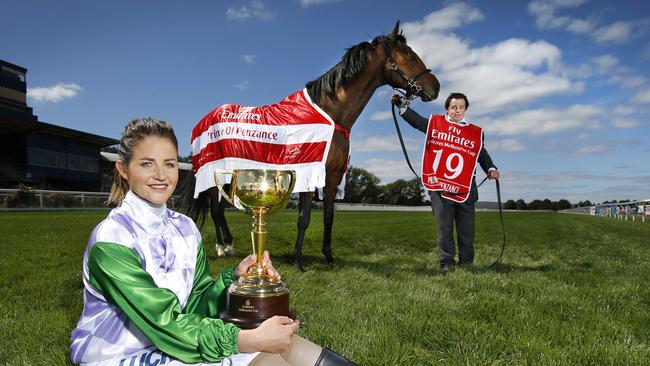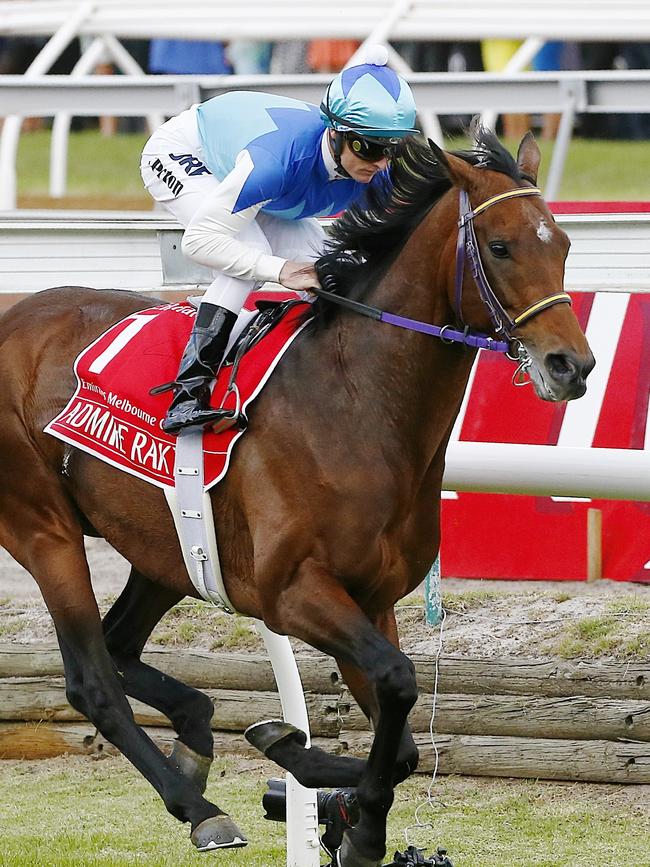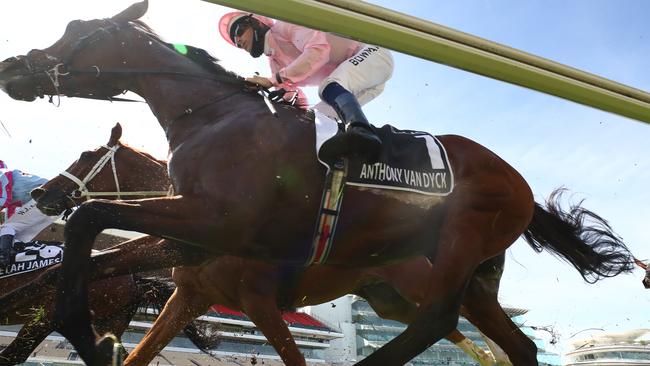Andrew Rule: Bringing international flair to the Melbourne Cup has caused trouble
Making the Melbourne Cup a more international event started off well, but it’s thrown up a big question — why are so many overseas horses breaking down?
Andrew Rule
Don't miss out on the headlines from Andrew Rule. Followed categories will be added to My News.
The people who run Victorian racing are still learning a lesson most of us get very young — that a good thing is great, but too much of a good thing is not. We learn it with chocolate cake at seven, with beer at 17.
By now, the fortunate folk who junketed, wined and dined around the northern hemisphere’s finest horse racing centres, from Ascot to Saratoga, must be getting a twinge of heartburn. Maybe even buyer’s remorse.
It seems that the more overseas horses they have attracted to run in the Melbourne Cup in the last decade, the more trouble it has caused.
They spent hundreds of thousands of dollars in travel, entertainment and subsidies — and the result is a public relations debacle that appears to have started a cold war between the state’s two most powerful racing bodies, The Victoria Racing Club and the sport’s governing body, Racing Victoria.

Denials by both sides — “Don’t mention the war!” — appear to be plastering over some very big cracks.
The dream of making the Cup a more international event started off well enough, if you count the beginning being the spring that the much-loved Irish trainer Dermot Weld arrived with Vintage Crop to win the 1993 Melbourne Cup.
The charming Weld and his grand horse helped spice up what some saw as a gloriously provincial race for glorified handicap horses.
Visitors like Vintage Crop and, nine years later, his stablemates Vinnie Roe and Media Puzzle, gave our great southern race an international flavour that was right for the times.
It was like adding salt to soup — in small quantities it greatly improved it. But when too many cooks elbowed their way in and kept adding more and more, it did not improve the result. It started to taste awful.

If the truth is told, average people who don’t care much about racing the rest of the year in any case, started to lose their seasonal interest in the Cup.
The more overseas horses that arrived, unknown and therefore unloved by the public, the less palatable the event gradually became to people outside racing’s incestuous little world.
The huge expense of importing horses meant that only very wealthy owners or syndicates could afford to bring them, further estranging the race from a million ordinary Australians who religiously had their few dollars each way and ran a sweep or two on the first Tuesday in November.
The trend accelerated until it warped. In the last decade, the people’s race moved from an international invitational race to something resembling a billionaire’s benefit: just slightly more relevant at street level than the Americas Cup yacht race.
With Bart Cummings’ 12th and final Cup win in 2008 before his death in 2015, an era ended. The Cups King must have shaken his head in disgust and disappointment in his last few years.
Since 2010, eight of the 10 winners have been “FIFO” specials, not all Irish mercenaries dialled up by reclusive Cup collector Lloyd Williams, but that’s what it felt like. The FIFO horses not only won the race but filled most of the places.

One reason for the national outpouring of joy over Prince Of Penzance’s fluky 100-1 win in 2015 was sheer relief.
The battler horse ridden by the girl from Ballarat was a story everyone could relate to. For once, it wasn’t a billionaire with one of a dozen generic European entries, throwing up a winner with a name no one knew a month before the race and no one cared about a month afterwards.
None of which would have got traction in the marketing department of Racing Product Inc, if it weren’t for the brutal fact that overseas horses break down, often fatally, while on these flying visits.
Here’s the thing. Bart Cummings had some 100 starters in his half- century of training Cup horses. Not one died in the race. George Hanlon had 50-odd starters; not one died in the Cup. Lee Freedman had close to 40 Cup runners and not one died.
The last Australian-trained horse to die in the Cup was Dulcify in 1979. But even he did not break down the way the overseas horses are breaking down because their bones are too soft for Australian tracks — he was galloped on by another horse and injured. A simple accident.




Compare and contrast what has happened since planeloads of horses have started flying in like honeymooners to Bali. This year the Epsom Derby winner Anthony Van Dyck broke down and was euthanised in the Cup. Two years ago, his Irish stablemate The Cliffsofmoher broke down and was euthanised in the Cup.
In 2015, the much-loved English horse Red Cadeaux was put down after three gallant placings. In 2014, the Japanese horse Admire Rakti had a heart attack and died at the Cup. In 2013, the French horse Verema broke down and was euthanised.
This does not take into account those, like Involved and Wichita and more, that break down on the training track. Of the 29 overseas horses that arrived for this year’s spring carnival, 20 have started in races and three are now dead. Of the 29, nine were trained by one Irish stable.
For international racehorses, the luck of the Irish is all bad. And while racing officials toss around the price of houses on recruiting junkets, we still have racetracks in Victoria with
a steel running rail … the sort that chops up horses and riders.
More than ever, racing needs its good stories told. But it won’t happen while it is producing so many bad ones.



